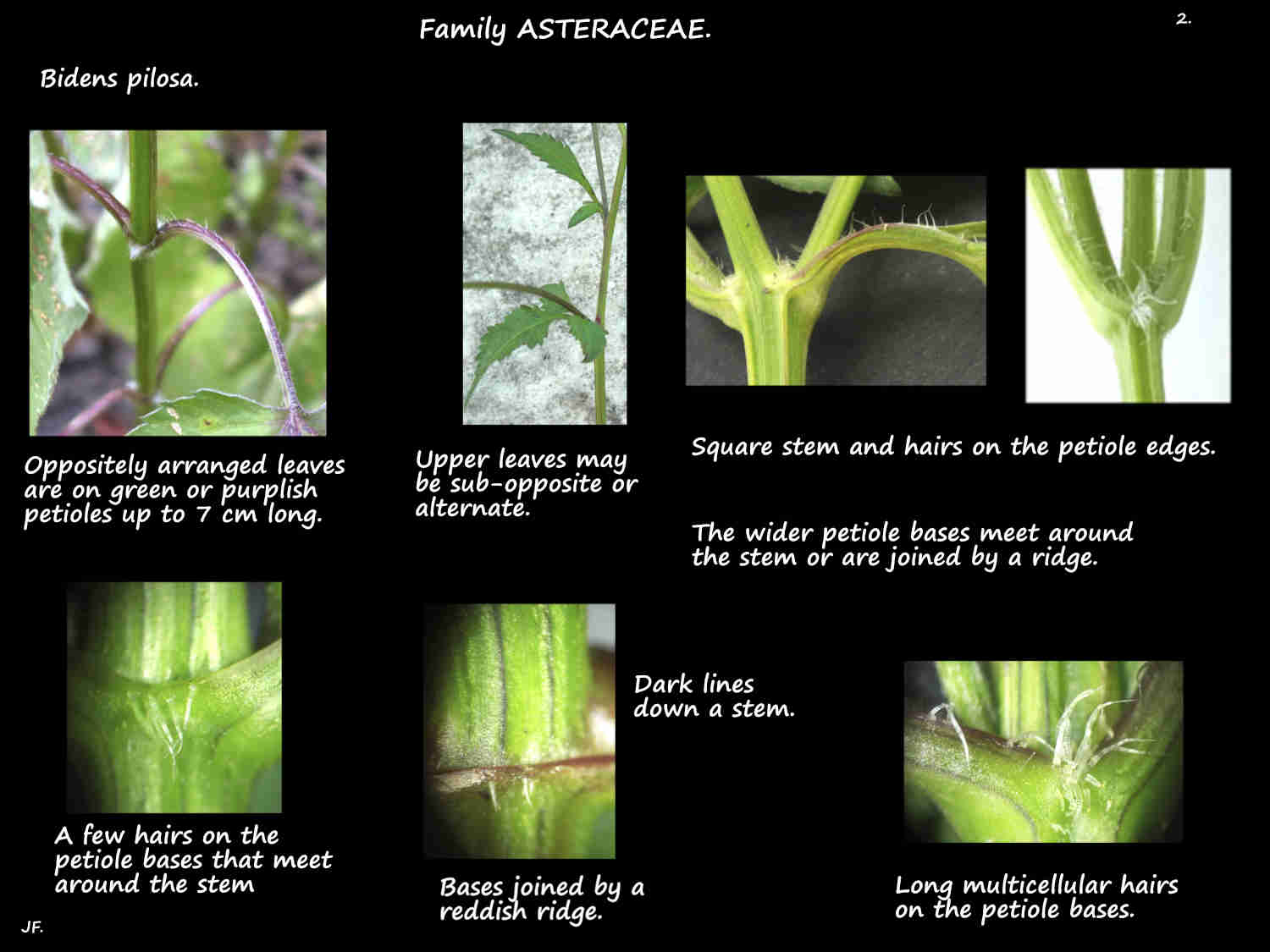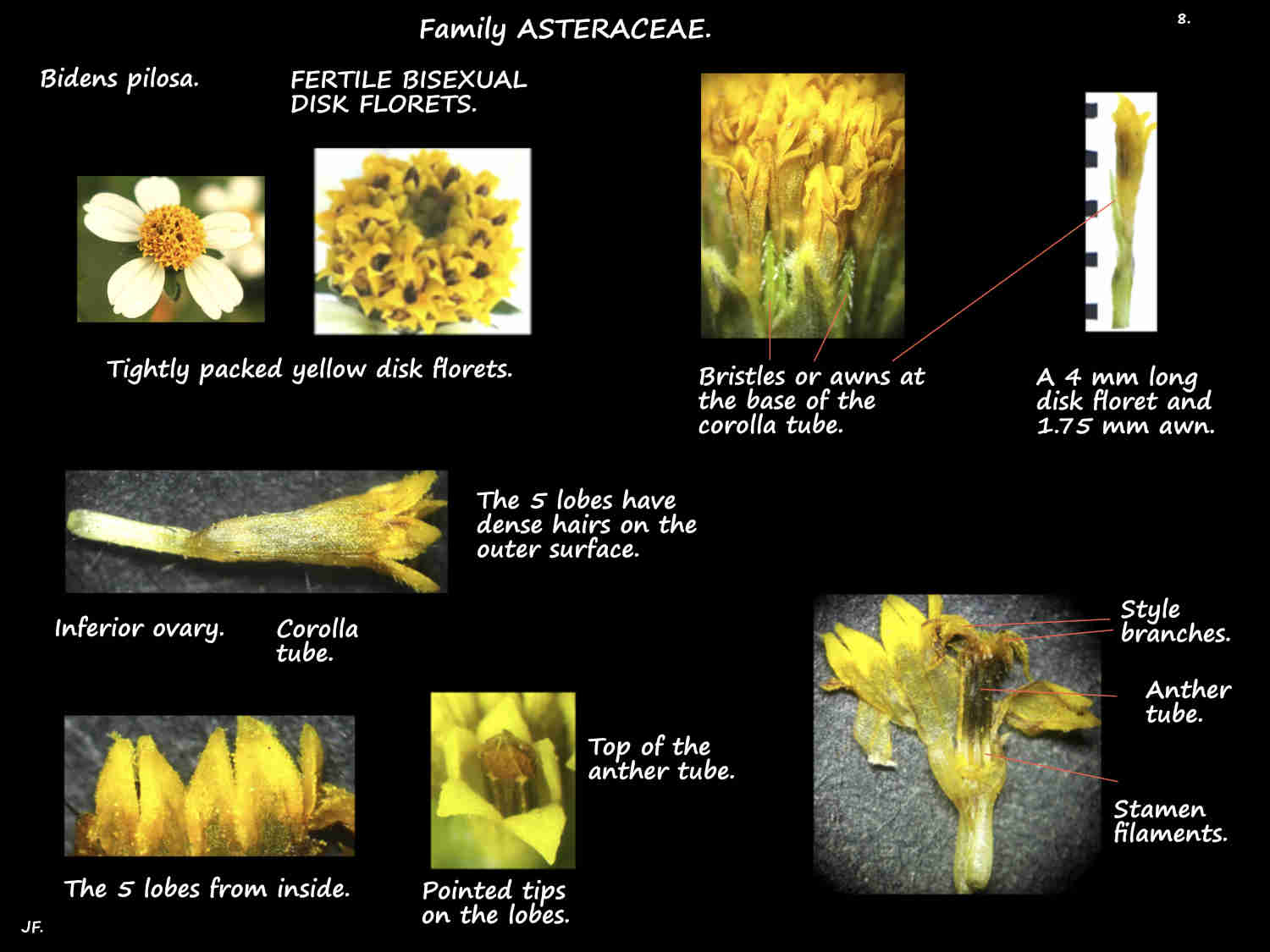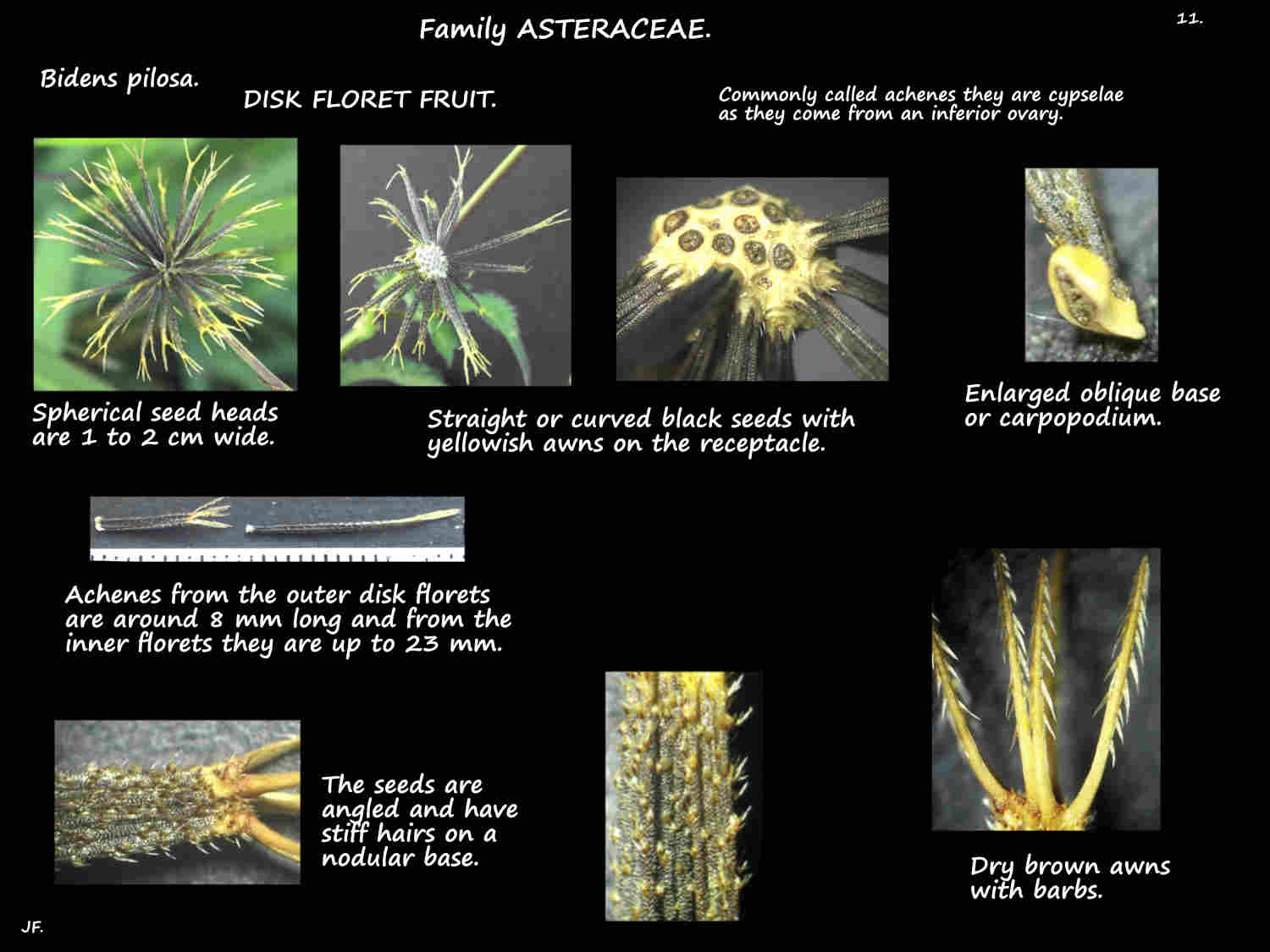Bidens pilosa.
Cobbler’s Pegs are invasive weeds from America that are naturalised in Australia.
The erect annual or occasionally perennial herbs are from 30 cm to 1 or 1.5 m high.
Sparsely to densely branched green to purplish stems are square in cross section.
Stems can be smooth to densely hairy.
The oppositely arranged leaves are on stalks or petioles from 1 to 7 cm long.
Petioles may be slightly winged and the wider base, with long hairs on the edges clasps the stem.
The size and shape of the blades varies with their position on the stem.
The larger lower leaves, up to 20 cm long by 11 cm wide are mostly elliptic and undivided.
Leaves near the top of the stem are sometimes sub-opposite to alternate.
The highest undivided or 3-lobed leaves are 1 to 2 cm long and 0.5 cm wide.
Most of the middle leaves are pinnate with 1 to 3 pairs of opposite leaflets and a terminal one.
The ovate leaflets are around 6 cm long and the terminal one 10 cm.
Leaflets have a pointed tip, teeth on the edges and may have no or a few hairs.
The terminal ovoid flower heads or capitula, up to 1.5 cm wide are mostly in loosely branched clusters.
They are on a thin smooth or hairy angled peduncle up to 10 or 15 cm long.
There are 2 whorls of bracts or phyllaries in the involucre.
The outer whorl has 8 to 10 narrow green bracts around 4 mm long and 1 mm wide.
They have a rounded tip, 1 vein, fine hairs on the edges and bend outwards.
The inner whorl has 6 to 8 slightly longer yellow-green or pale brown bracts.
They have a thin membranous margin and a tuft of small hairs at the tip.
As the fruit matures the initially flat receptacle becomes more convex increasing from 5 to 12 mm high.
The light brown scales or paleae between the disk florets are around 4 mm long and veined.
There are 4 to 8 (0 to 3) white or cream ray florets in a single row.
The tubular base is 3 to 8 mm long and the ovate ligule up to 15 mm long and 4.5 mm wide.
The tips are rounded or 2 or 3 lobed, there are up to around 7 dark nerves and hairs on the edges.
There may be no reproductive organs or a sterile ovary with or without a rudimentary style
and small infertile stamens (staminodes).
The numerous yellowish, orange or greenish-brown disk florets are 4 to 5 mm long.
They have a tubular corolla with a few glandular hairs at the base.
The 5 small lobes have dense hairs on the outer surface.
The filaments of the 5 stamens are free and the anthers are loosely fused into a 2 mm long tube.
The anther bases have tiny basal lobes or auricles and the tips a sterile ovate appendage.
The inferior slightly 4-angled ovary, with 1 locule and ovule has simple and glandular hairs on it.
The single style branches into 2 flattened arms just above the anther tube.
Each branch has a linear stigma and hairs.
Around the base of the style is a 0.5 mm high nectary.
At the top of the ovary are 2 or 3 awns or bristles (the pappus) with stout downward pointing barbs.
Fruit from the disk florets are Cypselae (from an inferior ovary) but commonly called achenes (a superior ovary).
The spherical seed head is 1 to 2 cm wide.
The slightly curved or linear black or reddish-brown ribbed seeds are of different lengths.
The outer ones are 4 to 8 mm long and the inner 10 to 23 mm.
They may be smooth, have short stiff hairs all over, just along the angles or near the top and some hairs have a nodular base.
At the top are the (0) 2 or 3 barbed awns or bristles that are 3 to 4 mm long.
J.F.













